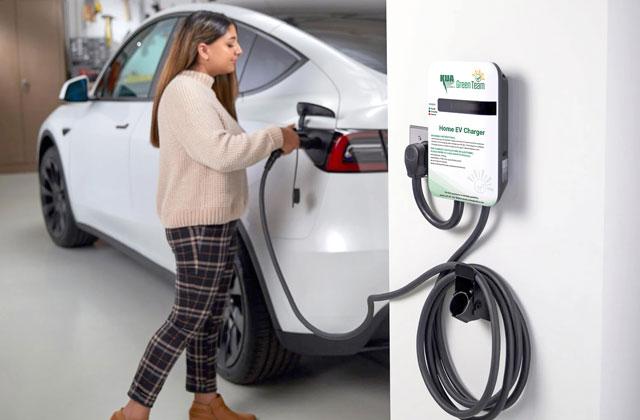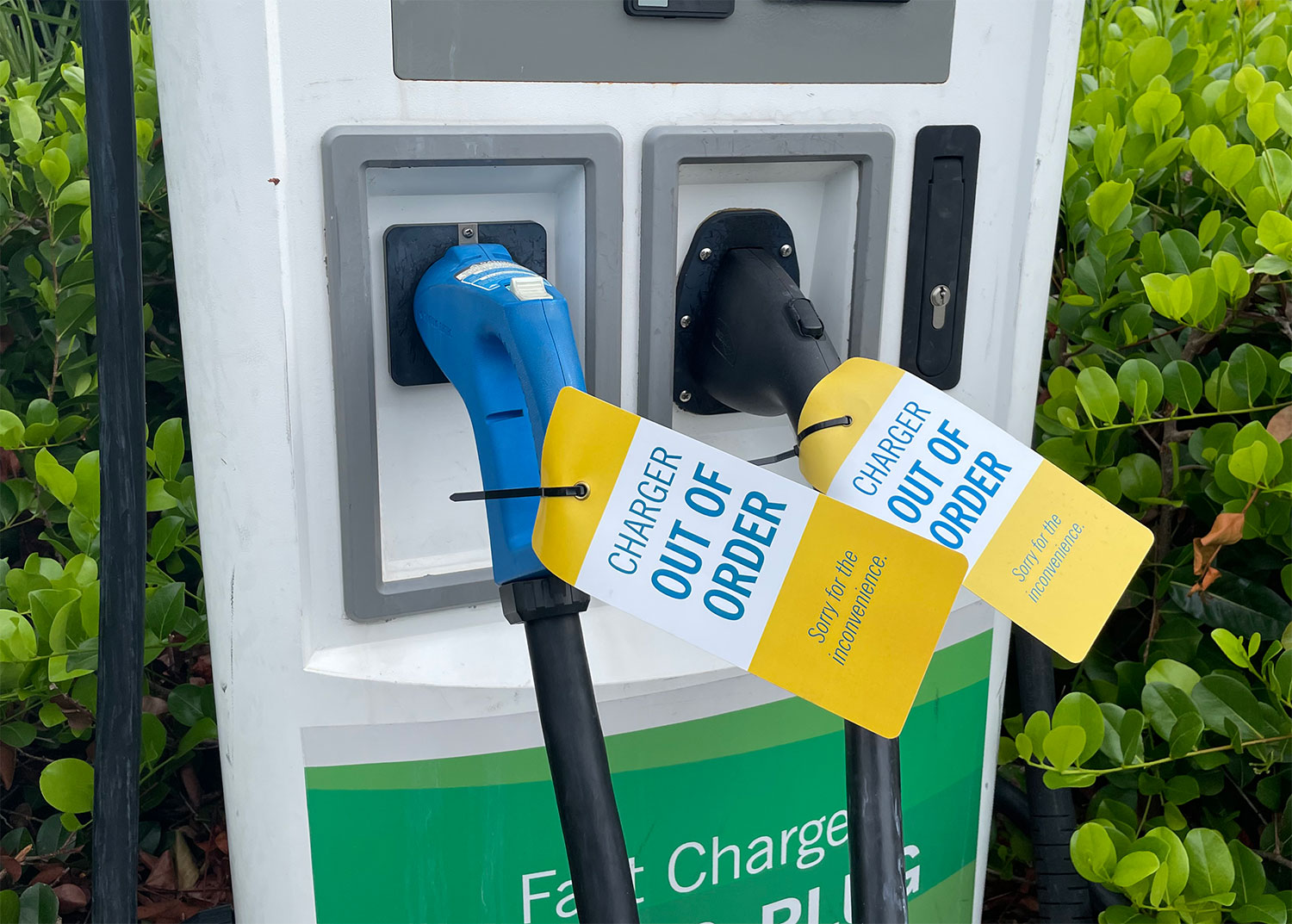Latest Trends and Insights You Need to Know Before You Buy EV Charging news
Latest Trends and Insights You Need to Know Before You Buy EV Charging news
Blog Article
Leading EV Charging Information: Key Updates on Infrastructure and Innovation

Current Improvements in Fast-Charging Technology

Moreover, innovations in battery modern technology, including improved thermal management systems and greater energy density batteries, enhance fast-charging abilities. These advancements minimize the risk of battery deterioration during quick charging, ensuring long life and performance for EV owners.
Furthermore, the integration of smart charging solutions is improving customer experience, making it possible for real-time tracking and vibrant rates models. EV Charging news. This adaptability permits motorists to maximize billing times and costs based on grid need
As automakers remain to buy fast-charging networks, the collaboration between sector stakeholders is important. Collaborations in between billing station companies and automotive makers are leading the way for comprehensive coverage, eventually fostering an extra robust EV community. These innovations are critical in supporting the transition to sustainable transport.
Government Efforts for Billing Expansion
Federal government efforts play a critical function in the expansion of electric automobile (EV) charging infrastructure, promoting the change to lasting transport. Numerous federal and state programs are being executed to enhance billing accessibility, minimize the economic problem on customers, and advertise the adoption of electrical automobiles.
Significantly, the united state federal government has allocated significant funding with the Infrastructure Investment and Jobs Act, which allocates $7.5 billion for EV billing network development throughout the country. This financing is focused on releasing thousands of new billing terminals, especially in underserved areas, thus dealing with variety anxiety among possible EV purchasers.
Furthermore, various states are enacting legislation to enhance the allowing process for billing station installments, which is important for increasing release. Rewards such as tax obligation credit ratings and refunds for both customers and businesses are also being introduced to motivate the setup of billing infrastructure.
In addition, public-private partnerships are progressively coming to be an emphasis, leveraging private financial investment to match government financing. These initiatives underscore a collective method necessary for constructing a reliable and thorough EV billing network, ultimately adding to a greener and more sustainable future.
Ingenious Battery Solutions Enhancing Efficiency
Revolutionizing the landscape of electric automobile (EV) modern technology, innovative battery solutions are dramatically enhancing efficiency and performance. Breakthroughs in battery chemistry, specifically with lithium-sulfur and solid-state batteries, are causing increased energy thickness, which allows for longer varieties and faster billing times. These brand-new battery types have the potential to outshine conventional lithium-ion batteries by offering higher capacities while decreasing weight, thereby enhancing total automobile effectiveness.
Moreover, advancements in battery monitoring systems (BMS) are enhancing energy use and expanding battery life expectancy. Smart formulas keep track of battery health and performance, allowing real-time changes to charging and discharging processes. This not only improves the performance of the battery yet additionally guarantees a more sustainable and dependable energy resource for EVs.
Furthermore, the combination of reusing modern technologies is attending to the environmental influence of battery production and disposal. Innovations in second-life applications for EV batteries are facilitating their use in energy storage systems, contributing to a round economy.
As these cutting-edge battery solutions proceed to advance, they site web guarantee to change the EV market, making electrical automobiles more enticing and obtainable to a broader target market while supporting international sustainability objectives.

Partnership Between Automakers and Charging Networks
Acknowledging the crucial demand for a durable billing framework, car manufacturers are significantly teaming up with charging network carriers to enhance the EV ownership experience (EV Charging news). These collaborations intend to create a seamless charging community that profits customers and supports the shift to electric vehicles
Significant vehicle brand names are signing up with pressures with established charging networks to broaden their billing terminal coverage, making certain motorists have access to dependable and convenient charging options. Collaborations view it with networks like ChargePoint and Electrify America allow automakers to integrate charging remedies directly right into their cars' navigating systems, assisting customers to the local terminals and offering real-time schedule updates.
Additionally, these partnerships often lead to the growth of fast-charging technologies that considerably lower the time required to recharge an EV. By merging resources and know-how, car manufacturers and billing networks can introduce faster, creating remedies that fulfill the growing demand for electric wheelchair.
Additionally, joint initiatives might likewise cause even more standard charging methods, which can alleviate customer complication and advertise wider EV fostering. In general, these critical partnerships are pivotal in constructing a user-friendly and efficient charging infrastructure that satisfies the needs of an increasing electric automobile market.
Challenges Dealing With EV Billing Facilities
As the electrical lorry market proceeds to grow, several difficulties are emerging that prevent the development of an extensive charging framework. One of the main barriers is the not enough number of charging stations, especially in underserved and rural metropolitan locations. This gap develops variety anxiety among prospective EV purchasers, preventing them from making the switch.
In addition, the lack of standardization accountable technology makes complex the click here to find out more infrastructure landscape. Variants in plug types and charging speeds can produce complication for individuals and enhance operational complexities for billing network drivers. Moreover, the integration of billing terminals into existing electrical grids poses substantial challenges. Many regions encounter capacity restrictions, calling for considerable financial investments in grid upgrades to suit enhanced demand.
An additional pressing issue is the high cost connected with the installment and maintenance of charging stations, which can be an obstacle for both public entities and personal companies. Ultimately, regulative obstacles and zoning restrictions can delay the deployment of billing infrastructure, impeding progression in increasing crucial services. Resolving these challenges will be important for fostering a durable EV community that supports the change to sustainable transportation.
Final Thought
To conclude, the ongoing innovations in EV billing technology, sustained by significant federal government initiatives and innovative battery options, are vital for the expansion and effectiveness of electrical car facilities. Cooperations between car manufacturers and charging suppliers additionally enhance station coverage, dealing with the growing demand for accessible charging alternatives. In spite of challenges that continue within the EV charging landscape, these advancements indicate a favorable trajectory towards a more efficient and lasting electric automobile environment.
Innovations in billing facilities have actually led to the development of ultra-fast battery chargers qualified of supplying up to 350 kW of power, significantly minimizing billing times. Variants in plug kinds and charging rates can create confusion for customers and increase operational intricacies for charging network operators.In verdict, the continuous improvements in EV charging modern technology, supported by significant federal government efforts and innovative battery services, are crucial for the development and performance of electrical automobile facilities. Cooperations in between automakers and billing providers additionally boost station protection, addressing the expanding need for obtainable charging choices. Despite difficulties that continue within the EV billing landscape, these advancements signify a positive trajectory in the direction of a much more lasting and efficient electric vehicle environment.
Report this page